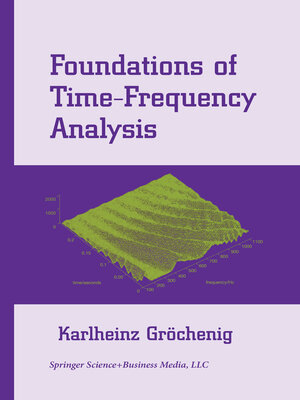Foundations of Time-Frequency Analysis
ebook ∣ Applied and Numerical Harmonic Analysis
By Karlheinz Gröchenig

Sign up to save your library
With an OverDrive account, you can save your favorite libraries for at-a-glance information about availability. Find out more about OverDrive accounts.
Find this title in Libby, the library reading app by OverDrive.



Search for a digital library with this title
Title found at these libraries:
| Library Name | Distance |
|---|---|
| Loading... |
Time-frequency analysis is a modern branch of harmonic analysis. It com prises all those parts of mathematics and its applications that use the struc ture of translations and modulations (or time-frequency shifts) for the anal ysis of functions and operators. Time-frequency analysis is a form of local Fourier analysis that treats time and frequency simultaneously and sym metrically. My goal is a systematic exposition of the foundations of time-frequency analysis, whence the title of the book. The topics range from the elemen tary theory of the short-time Fourier transform and classical results about the Wigner distribution via the recent theory of Gabor frames to quantita tive methods in time-frequency analysis and the theory of pseudodifferential operators. This book is motivated by applications in signal analysis and quantum mechanics, but it is not about these applications. The main ori entation is toward the detailed mathematical investigation of the rich and elegant structures underlying time-frequency analysis. Time-frequency analysis originates in the early development of quantum mechanics by H. Weyl, E. Wigner, and J. von Neumann around 1930, and in the theoretical foundation of information theory and signal analysis by D.







